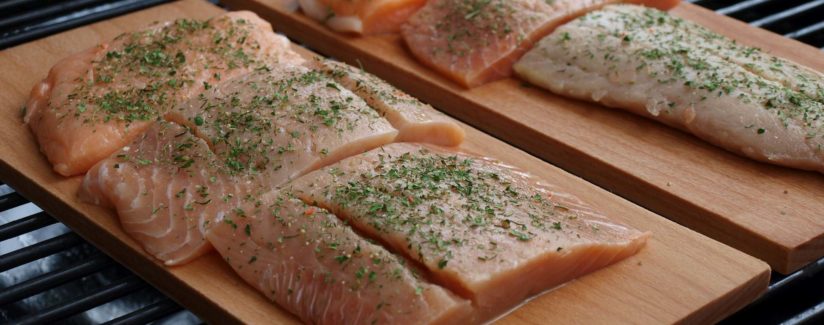
Keep Omega-6 and Omega-3 in Balance
02/13/2019
The importance of eating omega-3 and omega-6 fatty acids has gained some traction in the last couple of years. We now know that there is such a thing as healthy fat, and we’ve started to scan the labels on food products to check the levels of omega-3s and omega-6s that we are getting in our diets. But what really is the difference between omega-3s and omega-6s? Is it possible to get too much of either?
To answer these questions and more we got in touch with Dr. Sukhinder Cheema, Professor, Department of Biochemistry, at Memorial University and omega-3 fatty acid expert.
Why should I care about getting enough omega-3s and omega-6s in my diet?
Cheema: “Omega-3 and omega-6 fatty acids are essential fatty acids, meaning our body cannot make them, so we must consume them in our diet. Omega-3s and omega-6s are essential because they are required for proper growth and development, and to maintain normal functions of the body. They are very important for several functions such as brain and eye development, conception and delivery of a baby, blood clotting and/or blood thinning, blood pressure maintenance, inflammation, and several other functions in our body.”
“The two essential fatty acids are linoleic acid (LA), an omega-6 polyunsaturated fatty acid, and alpha-linolenic acid (ALA), an omega-3 polyunsaturated fatty acid. Now, to complicate things further, when you eat ALA, the type found in plant sources, it gets converted into EPA and DHA (also known as eicosapentaenoic acid and docosahexaenoic acid). EPA and DHA are the major omega-3 fatty acids that are responsible for several health benefits. So, it is often best to go straight to the source and consume EPA and DHA found in fish and marine sources. Although ALA has its own health benefits, there is very little conversion of ALA to DHA and EPA in the body.”
What’s the difference between omega-3 and omega-6?
Cheema: “The difference between omega-3s and omega-6s is all in their chemical structure. Without getting too caught up in the specifics, this structural difference causes the fatty acids to act differently and support different biological functions in the body.”
How much omega-3 and omega-6 should I be eating? Should I be getting more of one over the other?
Cheema: “The human diet during the Hunter-gatherer time was high in omega-3s, but today’s modern diet is high in omega-6s. The balance between omega-3 and omega-6 is very important. It is suggested that we should be eating 1 gram of omega-3 for every 5 – 10 grams of omega-6. But, here is the problem: most of the foods consumed in a typical North American diet are generally high in omega-6s. So, instead, we are typically consuming 25 – 40 grams of omega-6 for every 1 gram of omega-3, practically tripling the suggested amount of omega-6.”
“So, most of the population is getting enough omega-6s, while the intake of omega-3s is low to deficient. If you want more information, the International Society for the Study of Fatty Acids and Lipids gives a detailed list on the recommendations for omega-3s from various countries and for various age groups and stages of life. It is generally recommended to eat two servings of fatty fish per week to meet the recommendations for omega-3s.”
How do I reduce my omega-6 to omega-3 ratio? What makes omega-3 so special?
Cheema: “Omega-3s are special because these are essential for proper growth and development, brain and eye development, and several other functions in the body. A typical North American diet is high in omega-6s and low in omega-3s. Because of this, an effort has to be made to include omega-3s in our diet.”
“Some of the rich sources of omega-6s are sunflower oil, safflower oil, corn oil, canola oil and soybean oil – but canola oil and soybean oil also contain a decent amount of omega-3s. On the other hand, rich sources of plant based omega-3s (ALA) include flax seeds, chia seeds, hemp seeds and walnuts – but these foods are generally not a part of a typical diet. Omega-3 enriched eggs are also an excellent source of these fatty acids. Oily fish such as salmon, herring and mackerel are rich sources of omega-3s such as EPA and DHA. It is important to make an effort to reduce your consumption of foods rich in omega-6 fatty acids and to include foods containing omega-3 fatty acids as a healthy choice.”
Omega-3 and omega-6 are fatty acids that need to be consumed through our diet. Typical North American diets are high in omega-6, but low in omega-3. Because omega-3 are essential for functions in the body, consider adding more foods high in omega-3, such as flax seed, chia seeds and oily fish.


























